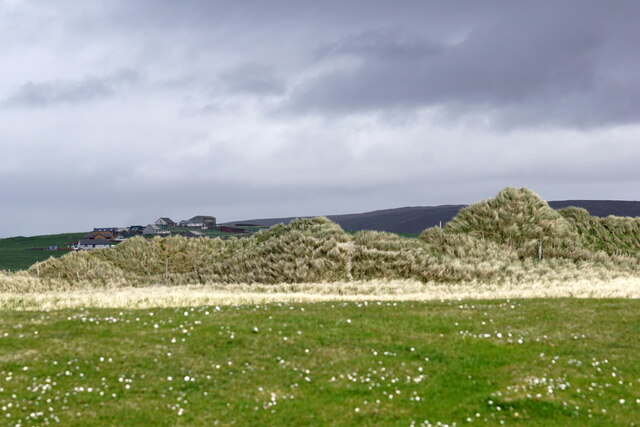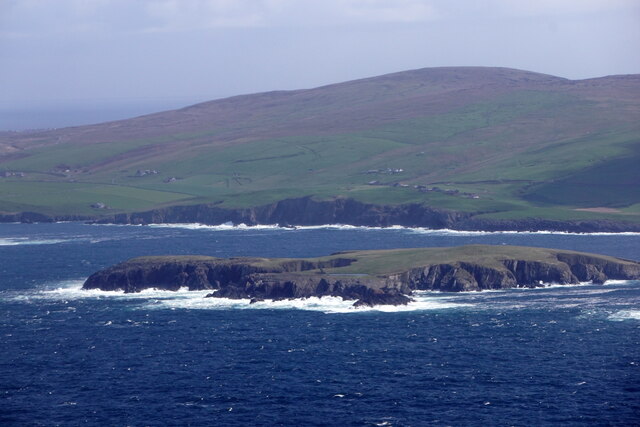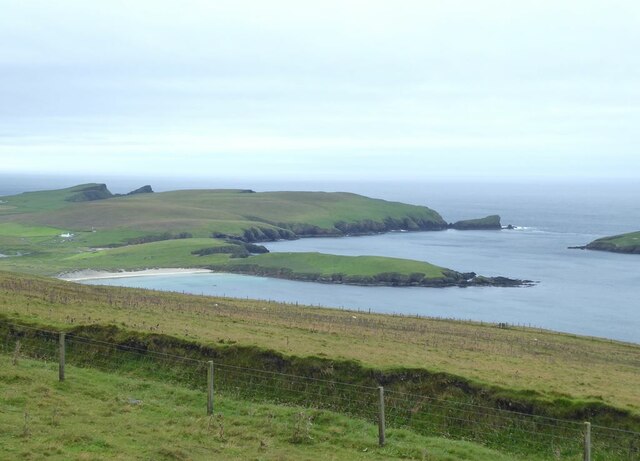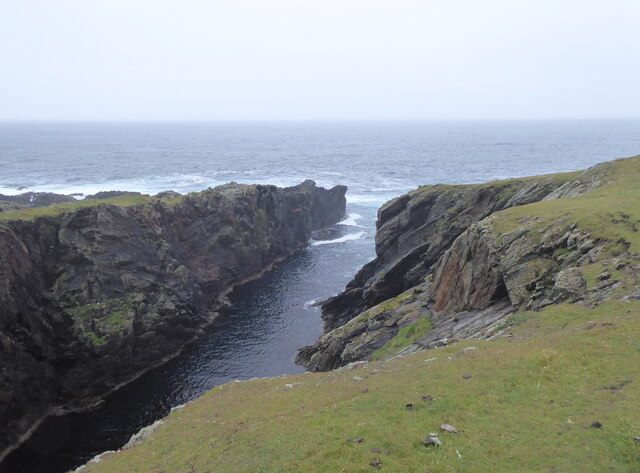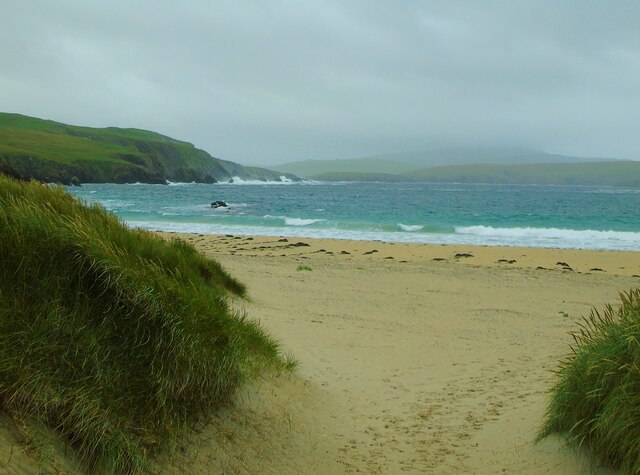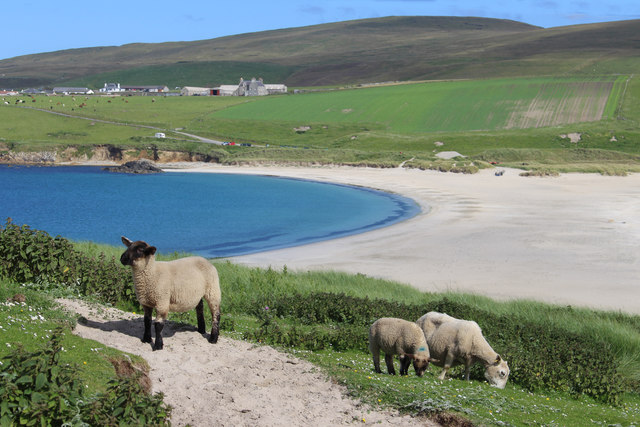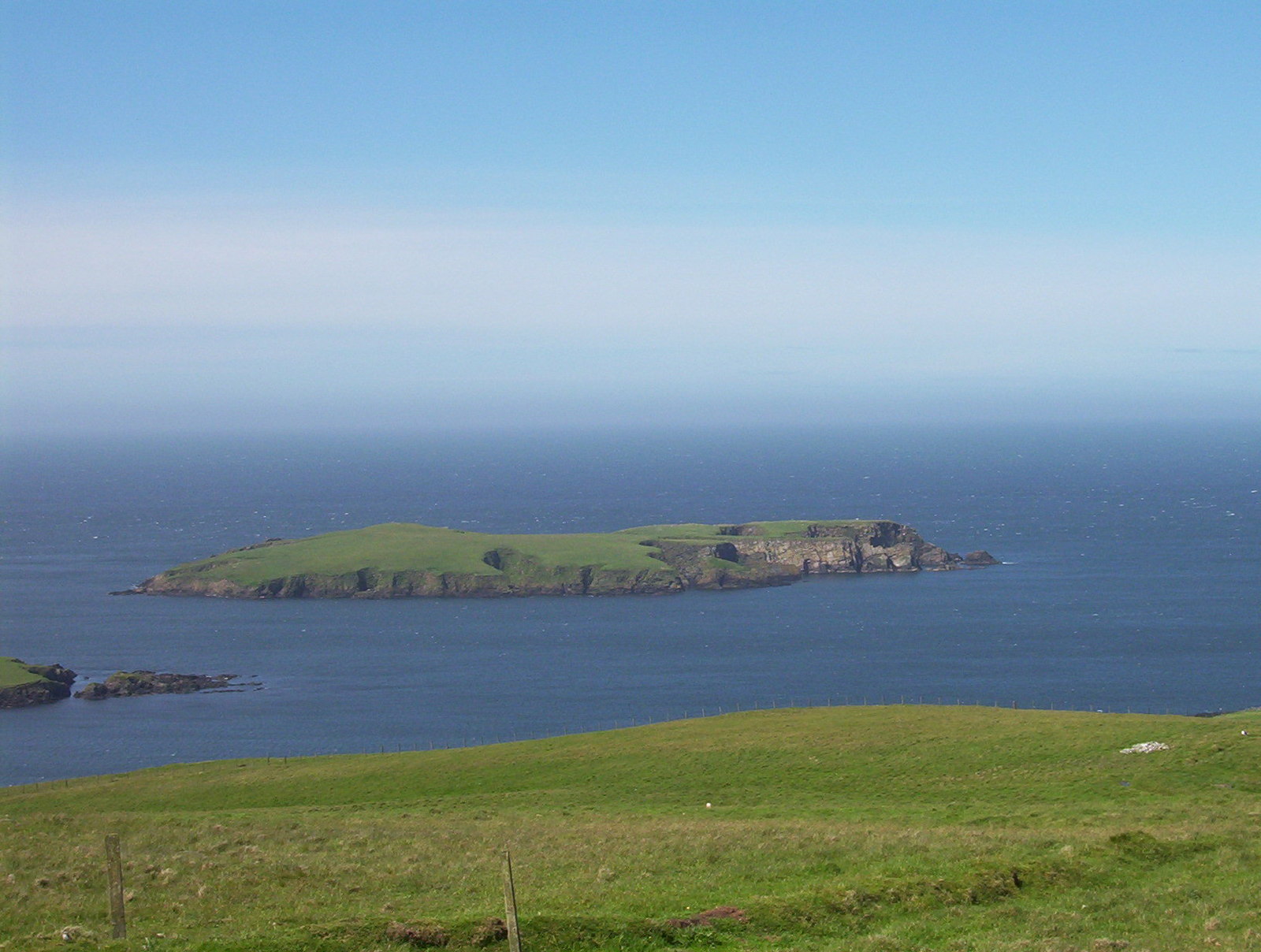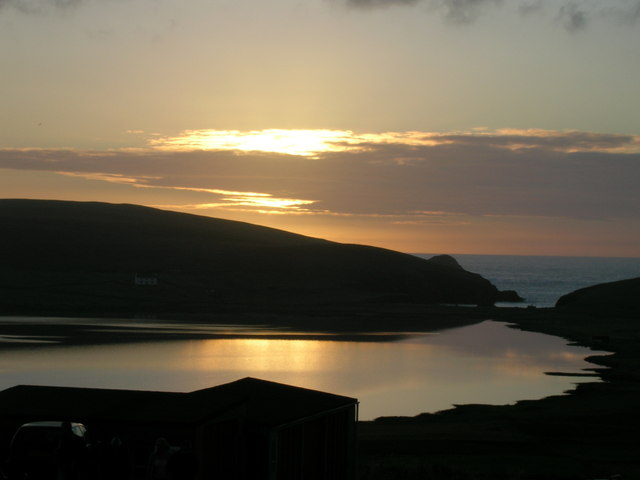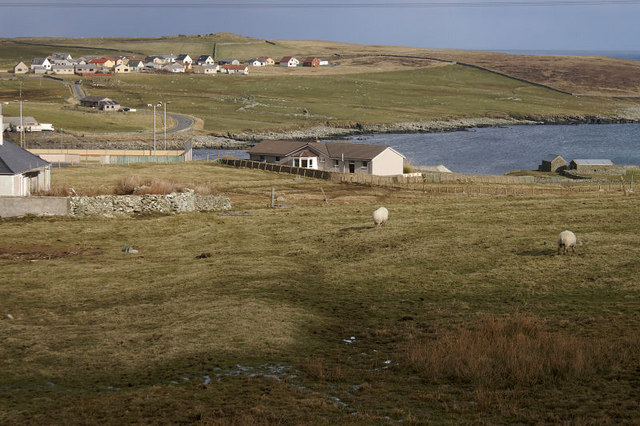Twalve-pund Stack
Island in Shetland
Scotland
Twalve-pund Stack
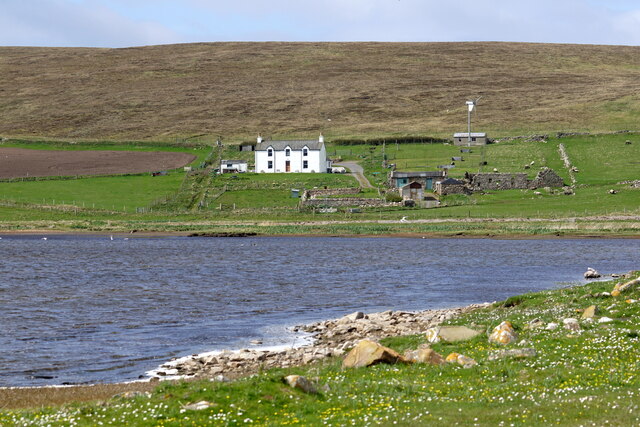
Twalve-pund Stack is a prominent geological formation located off the coast of the Shetland Islands in Scotland. It is a towering sea stack rising approximately 46 meters (150 feet) from the turbulent North Atlantic Ocean.
Situated in the northwestern part of Mainland Shetland, Twalve-pund Stack is composed of layers of sandstone and shale, formed over millions of years through the natural processes of erosion and sedimentation. The stack derives its name from the Old Norse word "pund," meaning a "pound" or "prominent hill," and "twalve," which refers to its height in fathoms.
The majestic Twalve-pund Stack has become an iconic landmark in the region, attracting visitors from far and wide who are captivated by its sheer magnitude and breathtaking beauty. Birdwatchers especially flock to this location, as it serves as a sanctuary for a variety of seabirds, including puffins, guillemots, and razorbills, which nest on the cliffs surrounding the stack.
Access to Twalve-pund Stack can be challenging due to its remote location and rugged terrain. Visitors can reach the site by following a designated coastal trail, which offers stunning panoramic views of the surrounding coastline and the neighboring islands. However, caution is advised, as the path can be steep and uneven in some sections.
Overall, Twalve-pund Stack is a remarkable natural wonder that showcases the dynamic forces of nature and provides a unique opportunity to observe and appreciate the diverse wildlife that calls the Shetland Islands home.
If you have any feedback on the listing, please let us know in the comments section below.
Twalve-pund Stack Images
Images are sourced within 2km of 59.953019/-1.3530745 or Grid Reference HU3618. Thanks to Geograph Open Source API. All images are credited.
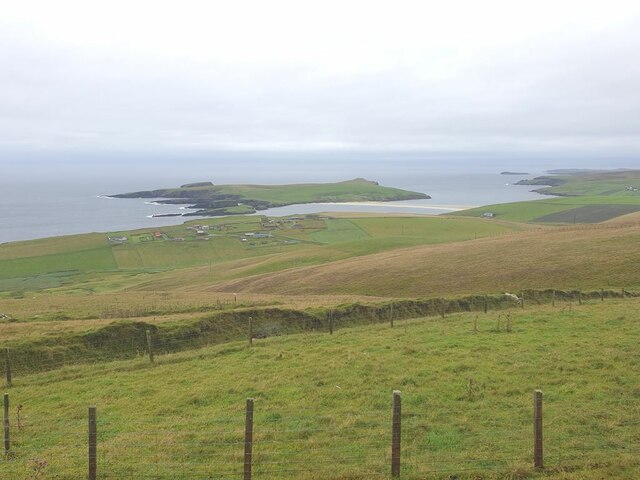


Twalve-pund Stack is located at Grid Ref: HU3618 (Lat: 59.953019, Lng: -1.3530745)
Unitary Authority: Shetland Islands
Police Authority: Highlands and Islands
What 3 Words
///professes.bleaching.tilt. Near Sandwick, Shetland Islands
Nearby Locations
Related Wikis
Colsay
Colsay is an uninhabited island off the South West coast of Mainland, Shetland. Fora Ness lies to the south, across the Muckle Sound. The highest elevation...
Scousburgh
Scousburgh is a small community in the parish of Dunrossness, in the South Mainland of Shetland, Scotland, overlooking the picturesque Scousburgh Sand...
St Ninian's Isle
St Ninian's Isle is a small tied island connected by the largest tombolo in the UK to the south-western coast of the Mainland, Shetland, in Scotland. It...
Lochs of Spiggie and Brow
The Lochs of Spiggie and Brow are located west of Boddam in the parish of Dunrossness, in the South Mainland of Shetland, Scotland, about 6 km north of...
Bigton
Bigton is a small settlement on South Mainland, Shetland, UK. Bigton is within the civil parish of Dunrossness.Bigton lies on the Atlantic coast of the...
Dunrossness
Dunrossness, (Old Norse: Dynrastarnes meaning "headland of the loud tide-race", referring to the noise of Sumburgh Roost) is the southernmost parish of...
Clumlie Broch
Clumlie Broch is an Iron Age broch located on Mainland, Shetland, in Scotland (grid reference HU40451811). == Location == Clumlie Broch is located in Dunrossness...
Boddam, Shetland
Boddam is a village on the island of Mainland, in Shetland, Scotland. Boddam is an area of Dunrossness in the South Mainland of Shetland. Although Boddam...
Have you been to Twalve-pund Stack?
Leave your review of Twalve-pund Stack below (or comments, questions and feedback).
